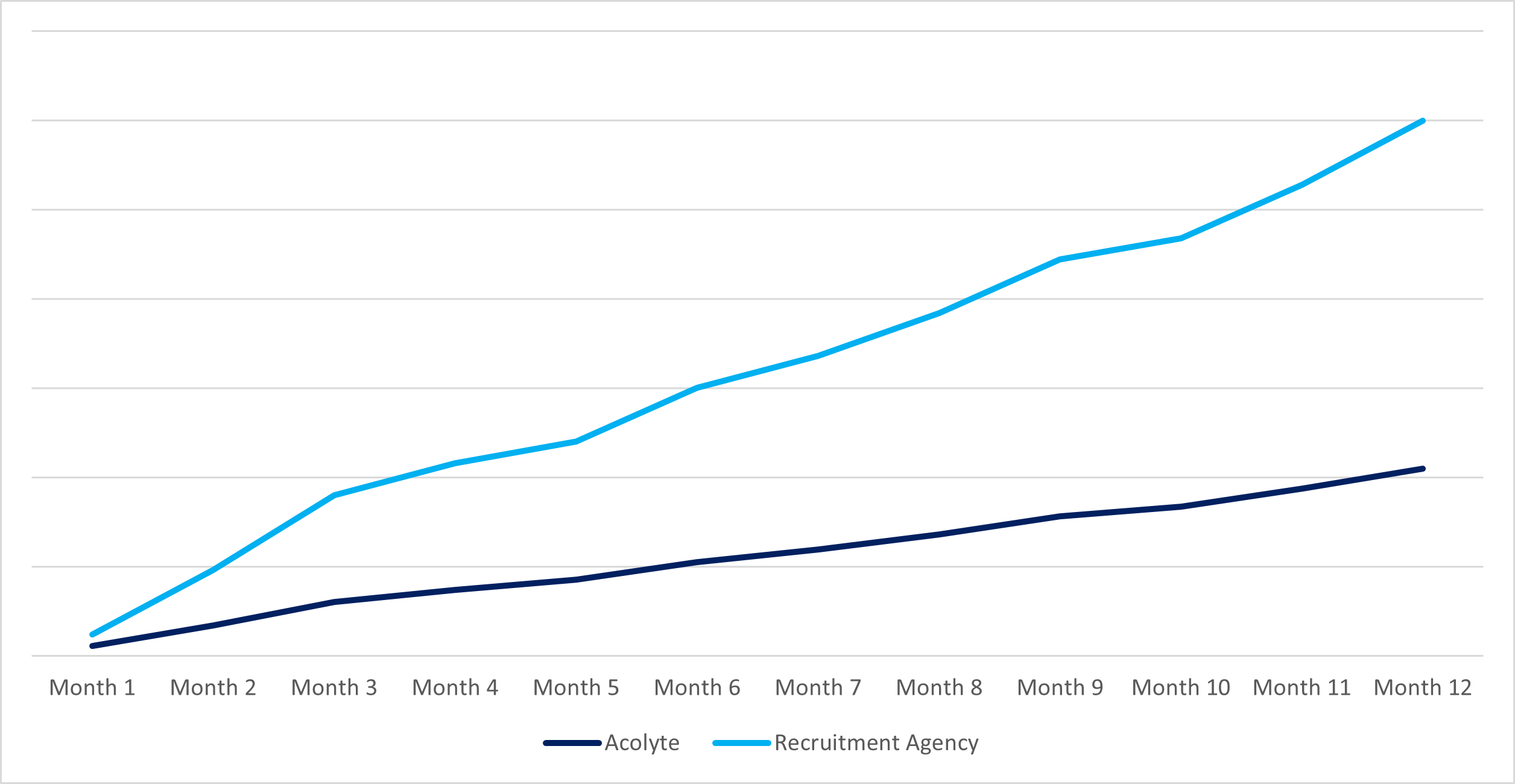Post Investment Scale Up: A guide for talent teams to hire in haste without breaking the bank
Having been a Director, and earlier in my career in talent acquisition, at a business when it received significant investment – I know first-hand how exciting it can be.
I also know, however, how it feels to shoulder the pressure and expectation: your organisation has successfully sold the vision but now need the hires to deliver on it. Pressure immediately builds on talent acquisition teams to deliver the resource the organisation needs for growth. There is not the time, or inclination, to scale up the internal recruitment team for a single period of burst hiring after which recruitment volumes will inevitably dip.
Talent teams also understand that the thing that makes or breaks a growth vision for a company is the people who are brought in to help realise it. The exec-level leadership know this too. No credible member of the C-Suite will underestimate the consequences of making a wrong hire, or the importance of making the right hire. The wrong person doesn’t just represent a significant cost, but also a huge distraction at a time when focus needs to be wholly on the push forward.
Likewise, the right hire can represent a quantum leap and add exponential value.
The pressure for top talent right now creates an urgency, and it can be tempting for talent teams to prioritise pace. Exercises such as mapping the candidate market, identifying all possible candidates for the position, and ensuring your talent team fully understand the new roles they are hiring for to find the best possible talent are often put on the backburner.
Instead, talent teams resort to expensive recruitment agencies to plug gaps or fill roles where they don’t have the internal bandwidth or expertise. While this immediately lightens the load – this route does have a negative impact. It restricts the talent teams’ budget for other new initiatives that they were hoping to implement post-investment. This impacts longer-term ability to attract and retain talent. Plus, because the hiring process doesn’t yield any additional insight, it does not enable the talent team to make robust data-driven talent decisions moving forward.
Thankfully, however, we are now in the digital era and digital headhunting means that it is possible to take a comprehensive approach for all roles without compromising on time or paying vast fees.
Acolyte can map and qualify the most complex candidate markets in a fraction of the time it would take traditional search agencies and can consequently also deliver the service at cost-effective rates.
Our digital headhunting solution uses AI blended with human oversight to provide an exec search level service for every role while reducing recruitment spend by approximately 70%. It also provides critical talent intelligence such as salary benchmarking, DE&I analysis and much more.

Fig 1 Acolyte costs vs recruitment agency costs for 50 roles in the 12 months following investment
Conducting the search process digitally, rather than manually, means that the intelligence which traditionally has been a waste product of recruitment, becomes weaponised. It provides talent leaders with insight that their executive team will truly value such as how you compare to direct competitors in terms of employee skill base and benchmarking your EVP/Employer brand.
So, if your talent team are facing the prospect of hiring for a rapidly scaling business, or if you just want to reduce recruitment agency spend, get in touch with Acolyte to see how you can grow your people base intelligently as well as at pace.